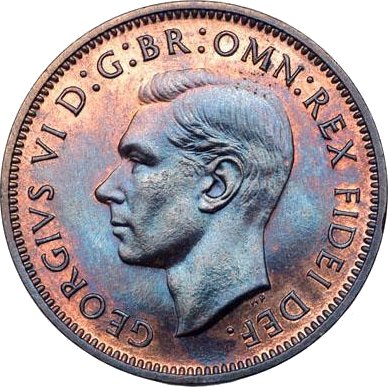Elizabeth II (1926). Elizabeth II is Queen of the United Kingdom and the other Commonwealth realms. Elizabeth was born in London as the first child of the Duke and Duchess of York, later King George VI and Queen Elizabeth, and she was educated privately at home. Her father acceded to the throne on the abdication of his brother King Edward VIII in 1936, from which time she was the heir presumptive. She began to undertake public duties during the Second World War, serving in the Auxiliary Territorial Service. In 1947, she married Prince Philip, Duke of Edinburgh, a former prince of Greece and Denmark, with whom she has four children: Charles, Prince of Wales; Anne, Princess Royal; Prince Andrew, Duke of York; and Prince Edward, Earl of Wessex. When her father died in February 1952, Elizabeth became head of the Commonwealth and queen regnant of seven independent Commonwealth countries: the United Kingdom, Canada, Australia, New Zealand, South Africa, Pakistan, and Ceylon. She has reigned as a constitutional monarch through major political changes, such as devolution in the United Kingdom, Canadian patriation, and the decolonisation of Africa. Between 1956 and 1992, the number of her realms varied as territories gained independence, and as realms, including South Africa, Pakistan, and Ceylon, became republics. Her many historic visits and meetings include a state visit to the Republic of Ireland and visits to or from five popes. Significant events have included her coronation in 1953 and the celebrations of her Silver, Golden, and Diamond Jubilees in 1977, 2002, and 2012, respectively. In 2017, she became the first British monarch to reach a Sapphire Jubilee. She is the longest-lived and longest-reigning British monarch as well as the world's longest-serving female head of state, oldest living monarch, longest-reigning current monarch, and the oldest and longest-serving current head of state. Elizabeth has occasionally faced republican sentiments and press criticism of the royal family, in particular after the breakdown of her children's marriages, her annus horribilis in 1992 and the death in 1997 of her former daughter-in-law Diana, Princess of Wales. However, in the United Kingdom support for the monarchy has been and remains consistently high, as does her personal popularity. Elizabeth was born at 02:40 on 21 April 1926, during the reign of her paternal grandfather, King George V. Her father, the Duke of York, was the second son of the King. Her mother, the Duchess of York, was the youngest daughter of Scottish aristocrat the Earl of Strathmore and Kinghorne. She was delivered by Caesarean section at her maternal grandfather's London house: 17 Bruton Street, Mayfair. She was baptised by the Anglican Archbishop of York, Cosmo Gordon Lang, in the private chapel of Buckingham Palace on 29 May, and named Elizabeth after her mother; Alexandra after George V's mother, who had died six months earlier; and Mary after her paternal grandmother. Called Lilibet by her close family, based on what she called herself at first, she was cherished by her grandfather George V, and during his serious illness in 1929 her regular visits were credited in the popular press and by later biographers with raising his spirits and aiding his recovery. Elizabeth's only sibling, Princess Margaret, was born in 1930. The two princesses were educated at home under the supervision of their mother and their governess, Marion Crawford. Lessons concentrated on history, language, literature, and music. Crawford published a biography of Elizabeth and Margaret's childhood years entitled The Little Princesses in 1950, much to the dismay of the royal family. The book describes Elizabeth's love of horses and dogs, her orderliness, and her attitude of responsibility. Others echoed such observations: Winston Churchill described Elizabeth when she was two as a character. She has an air of authority and reflectiveness astonishing in an infant. Her cousin Margaret Rhodes described her as a jolly little girl, but fundamentally sensible and well-behaved. During her grandfather's reign, Elizabeth was third in the line of succession to the British throne, behind her uncle Edward and her father. Although her birth generated public interest she was not expected to become queen, as Edward was still young, and likely to marry and have children of his own, who would precede Elizabeth in the line of succession. When her grandfather died in 1936 and her uncle succeeded as Edward VIII, she became second in line to the throne, after her father.
more...


